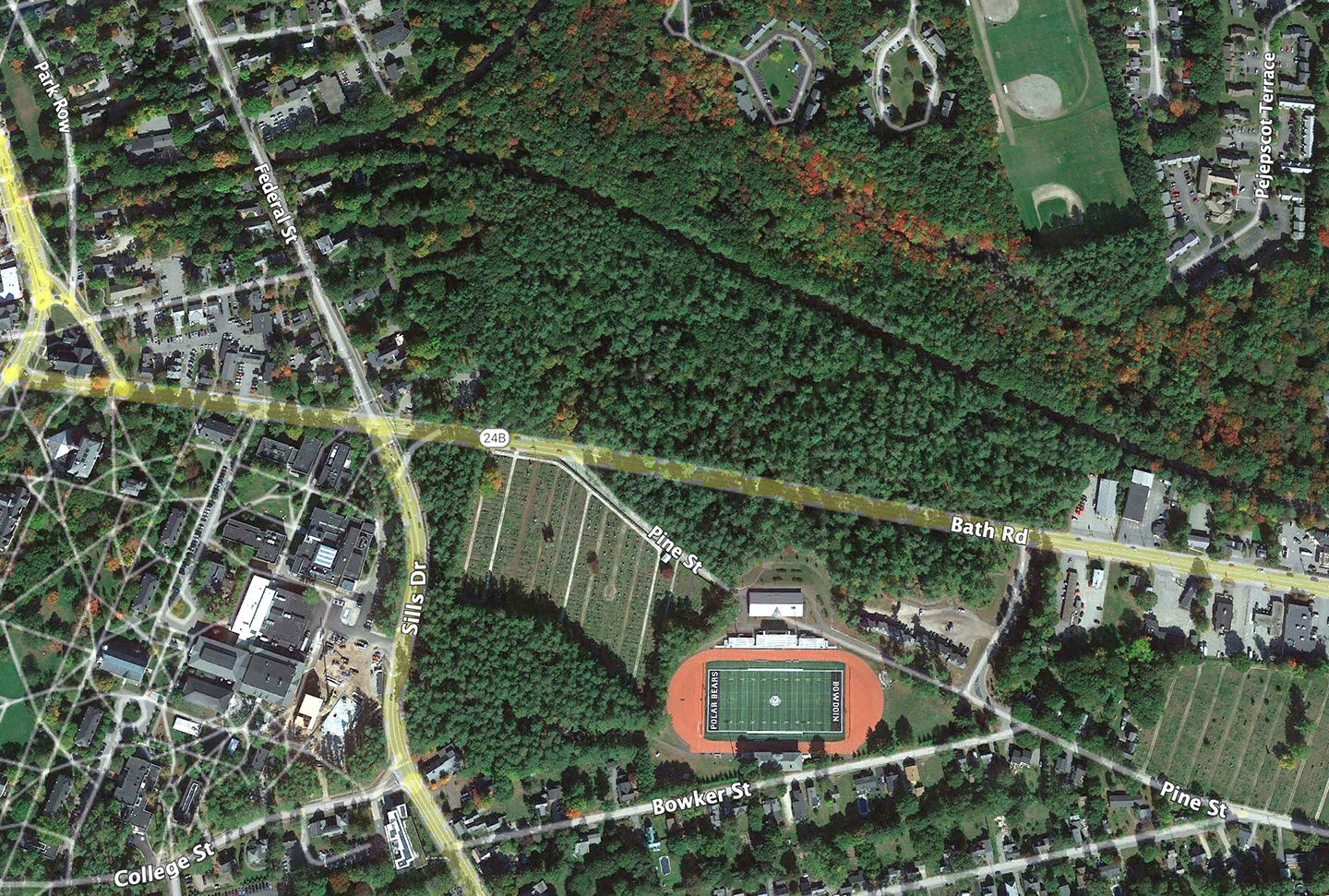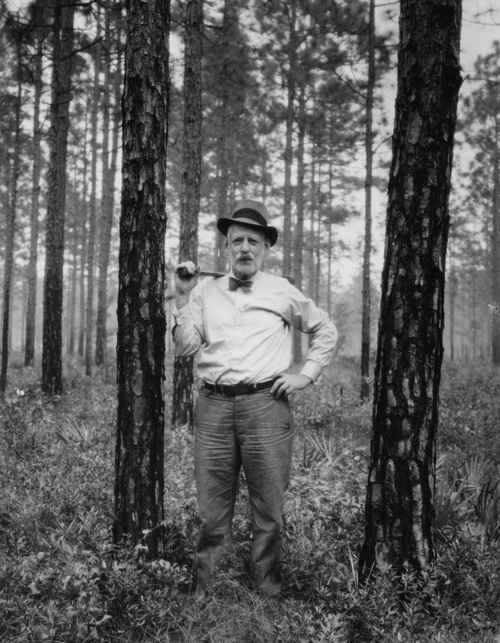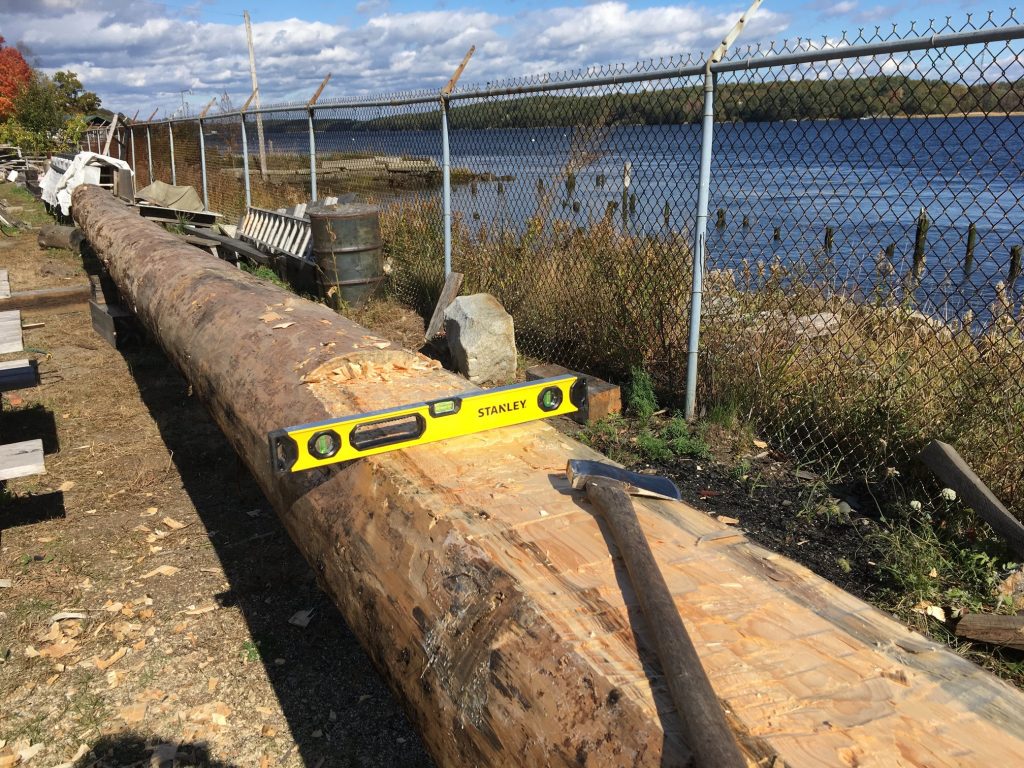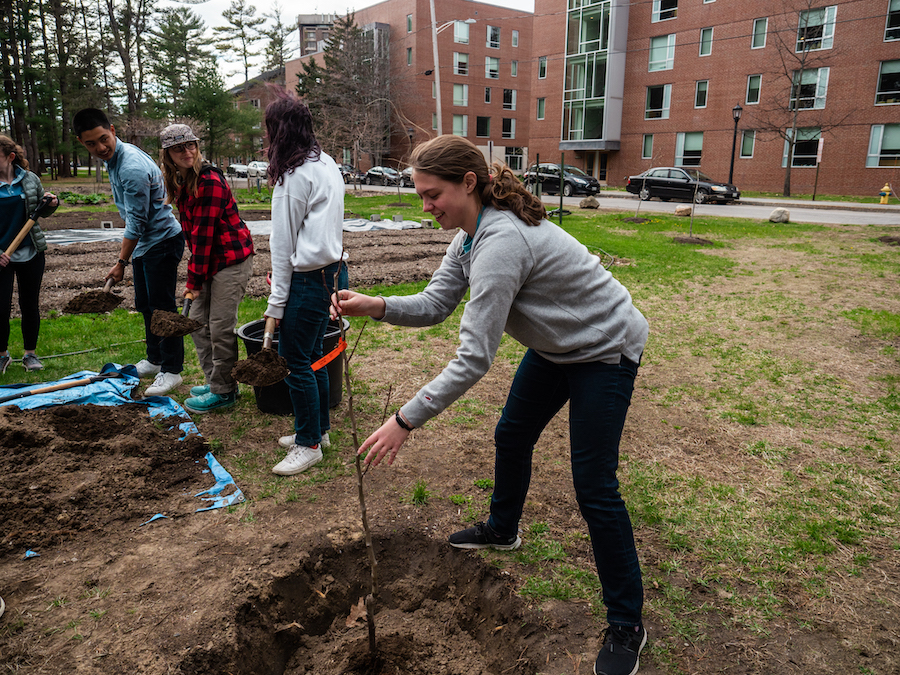After more than three years of research and planning, Bowdoin College has undertaken forest management efforts to preserve the legacy of the Bowdoin Pines.
Taking critical steps to maintain and preserve the Bowdoin Pines, Bowdoin College, in consultation with forestry, faculty, and staff experts, has implemented a plan to proactively manage the health of a thirty-acre stand of pine forest on college-owned land. The Bowdoin Pines are located on either side of Bath Road, just east of downtown, and include the approach to Whittier Field.
This careful stewardship, in consultation with landscape architects, environmentalists, and arborists, will allow the Bowdoin Pines to thrive as a vibrant and important piece of the Brunswick landscape for generations to come.
Since 2021, the College has partnered with Maine Woodlands Owners, a statewide organization that advances stewardship of Maine’s small woodland resources through the encouragement of good forestry practices. Bowdoin also engaged forestry consultant Two Trees Forestry to explore with the committee a variety of approaches to preserving the white pine dominance and improving the health of the forest.
After careful consideration of the options, and in recognition of the College’s historic association with the Bowdoin Pines and their iconic place in Maine’s landscape, the College has adopted a plan to preserve white pine dominance by undertaking selective cutting to open the forest canopy, remove diseased, non-native, and compromised trees, and create conditions favorable for natural regeneration on approximately seventeen of the Bowdoin Pines’ thirty acres.
On May 28th and June 1st, 2025, Bowdoin invited community members on a walk through the Bowdoin Pines and a discussion of the upcoming woods management project with project coordinators.
To provide for comparative study of forest succession and biodiversity, two areas of roughly thirteen acres remain untouched. Other goals include improving access, signage, and trails for passive recreation and the creation of study plots for long-term data collection.

The Bowdoin Pines are located on either side of Bath Road, just east of downtown, and include the approach to Whittier Field.
The advanced age of some trees, distress that can be alleviated with opening the canopy to allow in more light, and other conditions unfavorable to natural white pine regeneration have hurt and continue to threaten the health of the Bowdoin Pines and the likelihood that the area will remain a white pine-dominated forest.
Severe storms in 2020 and 2021 caused significant and lasting tree damage and drew added attention to the deteriorating conditions present, resulting in the formation in early 2021 of an internal working group to explore options for sustaining care and use of the area.
“Forest management is a long-term proposition, one to which Bowdoin is fully committed as part of the College’s stewardship of its campus and as a small woodland owner in Maine.”

Harvested hardwood from this project was donated to the Midcoast Wood Bank, which provides temporary, emergency firewood assistance to individuals and families in the Bath, Bowdoin, Bowdoinham, Brunswick, Harpswell, Lisbon, Topsham, and Woolwich communities.
When forestry pioneer Austin Cary, a member of the Class of 1887, devised a plan for the Bowdoin Pines in 1896, he advocated that they should be managed according to scientific forestry principles.
Cary would go on to make history in the forestry world and was an early champion of sustainable forestry.
“In each state and community, bodies of well-managed woods are bound to serve in the needed education of the people—the management of the college forest according to scientific principles seems very much worth-while.”
“Here within touch are all kinds from the foresters' standpoint—good, bad and indifferent. Here are small bodies of mature pine lumber. Here are fine stands of trees thirty to fifty years of age growing up together. Here are dense bunches of young growth in the openings and occasional great portly trees. Here decidedly, forestally speaking, is the show ground of the campus, needing again little more than selection among the young and old to carry it to its highest development on the side of both beauty and utility.”
—Austin Cary, Class of 1887, writing in the January 28, 1904 issue of the Bowdoin Orient


